Invisalign – Fort Worth, TX
The Discreet Way to Achieve Your Dream Smile
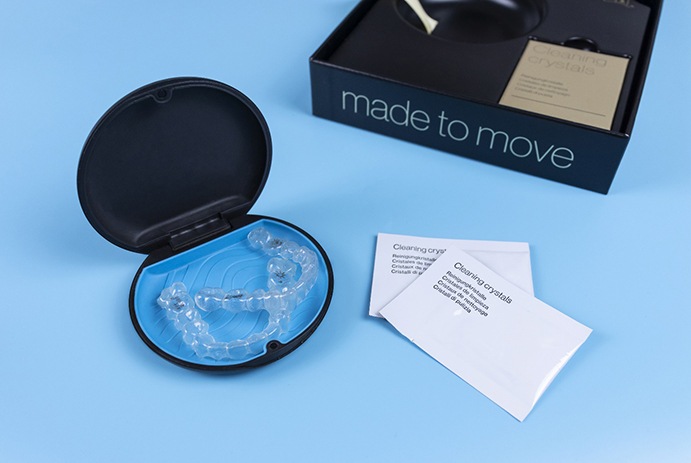
Although crooked, crowded, or gapped teeth are typically a cosmetic concern, the negative impact on your self-esteem shouldn’t be dismissed. Fortunately, you can discreetly trade imperfections in your smile for straight, beautiful teeth thanks to Invisalign in Ft. Worth! Plus, they are entirely removable, hold an impressive 96% satisfaction rate, and have helped countless patients over the last two full decades achieve their dream smile. To learn more about this teeth-straightening solution or schedule your initial consultation, don’t hesitate to contact our office.
Why Choose Drennan Family Dentistry for Invisalign?
- Friendly & Experienced Dentist
- Customized Treatment Plans for Maximum Comfort
- Achieve Your Dream Smile Without the Clunky Metal
How Does Invisalign Work?
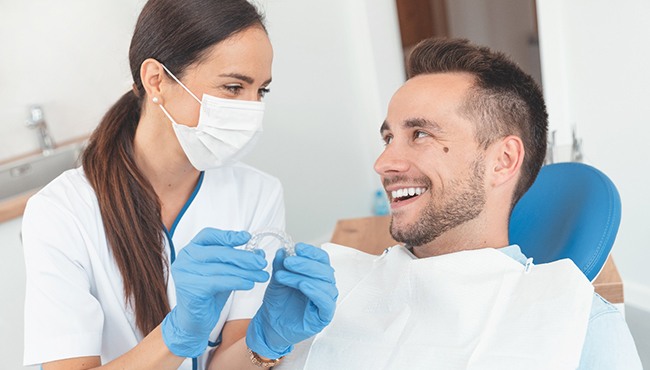
Your journey to your new and improved smile will begin with an initial consultation with Dr. Drennan. Once he has conducted a thorough dental exam and confirmed that Invisalign is the best treatment option for you, our team will take measurements, X-rays, photos, and impressions of your teeth. Each of these will serve an important role in developing your treatment with the technicians at Invisalign.
From there, your custom-made aligners are crafted to perfection and sent to our office. The rest of the process is quite simple. We will provide you with your trays for each phase of treatment, which you must wear for at least 22 hours every day. Over the next 12 to 24 months, your dentist in Ft. Worth will monitor the movement of your teeth and make sure your treatment plan is on track at your follow-up appointment every four to six weeks.
Who Can Invisalign Help?

Many of us didn’t naturally develop a perfectly straight smile. Fortunately, Invisalign can correct a wide range of misalignment issues, so you don’t necessarily need to endure a year or two of metal brackets and wires. Continue reading to learn about some of the different alignment problems that Invisalign can effectively address.
Crowded Teeth
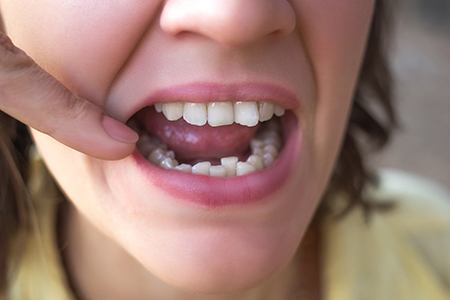
As you get older, crowding can become worse because your teeth continue to shift. Ultimately, this can impact your overall and dental health. Here are some of the issues you could be looking at if you don’t have the issue addressed:
- Tooth decay
- Gum disease
- Jaw discomfort
- Difficulty chewing
Crowding can also cause your teeth to overlap, making certain areas much more difficult to clean, causing bacteria, food debris, plaque, and tartar to accumulate. By opting for Invisalign, your teeth will be gently shifted to be the correct distance apart. This makes brushing and flossing easier.
Gaps Between Teeth
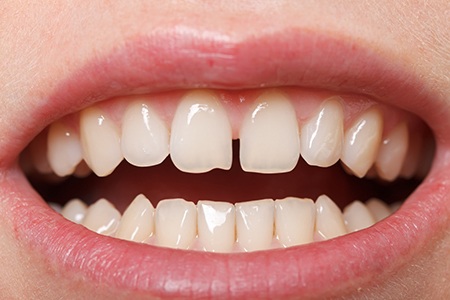
While crowded teeth can pose a significant problem to your smile, the same can be said for gapped teeth. When too much space exists within the mouth, bacteria can also become trapped, raising the risk of tooth decay and gum disease. With Invisalign, the clear aligners can work to bring teeth back into alignment and closer together to create a more beautiful aesthetic and healthier smile.
Overbite
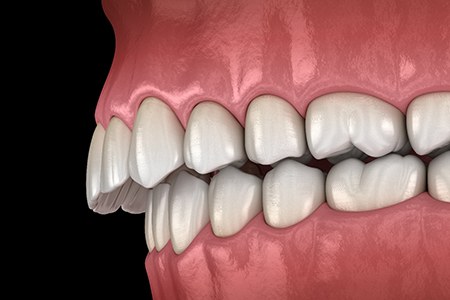
An overbite is a bite issue that causes the top teeth to come out too far from the lower arch of the teeth. Overbites can lead to jaw pain, speech issues, uneven dental wear, and difficulty closing and opening the mouth. This issue can also leave the top teeth more exposed, putting them at higher risk of becoming injured and damaged. Invisalign is able to correct many overbites.
Underbite
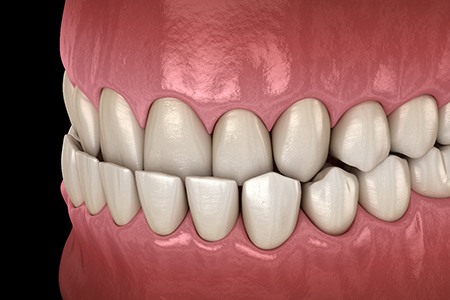
An underbite describes the alignment issue where the bottom teeth go slightly passed or match with the top row of teeth when you close your mouth. This can be caused by a variety of different factors, including genetics, jaw injury, and non-nutritive habits, like thumb sucking and pacifier use after a certain age. Underbites can lead to a variety of problems when they aren’t addressed. This includes increased risk of sleep apnea, mouth breathing, and difficulty speaking and chewing. Typically, patients who have underbites require the use of rubber bands or other attachments that they can use in combination with their Invisalign trays. This helps to gradually adjust their bite and pull back their lower arch into its proper position.
Crossbite
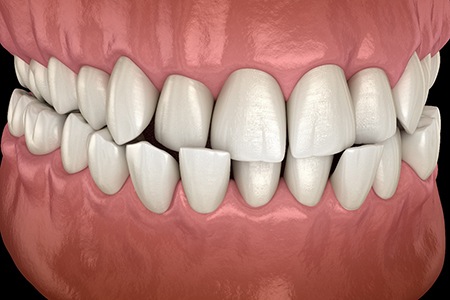
When the bottom teeth are slightly in front of the upper arch, this is called a crossbite. This is typically due to genetics, poor oral habits, or premature loss of baby teeth. When left unaddressed, crossbites can lead to long-term issues, like increased risk of gum disease and tooth decay, jaw pain, speech difficulties, headaches, bruxism, and facial asymmetry. Invisalign is able to address this issue in most cases. However, if the crossbite is a result of issues involving jaw development, it might be necessary to accompany the aligners with elastics or other accessories.
Open Bite
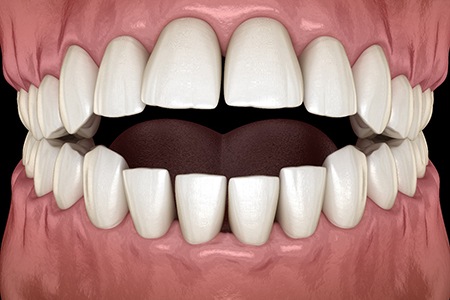
An open bite is when the top and bottom front teeth are unable to overlap or touch when you close your mouth all the way. This is usually caused by poor bone development or nonnutritive habits, like prolonged thumb-sucking and pacifier use. Open bites can lead to difficulty pronouncing certain words and sounds, as well as excessive enamel wear of the back teeth. Invisalign can help to bring the front top and bottom teeth together, correcting the bite pattern and reducing the risk of dental damage and wear.
Benefits of Invisalign
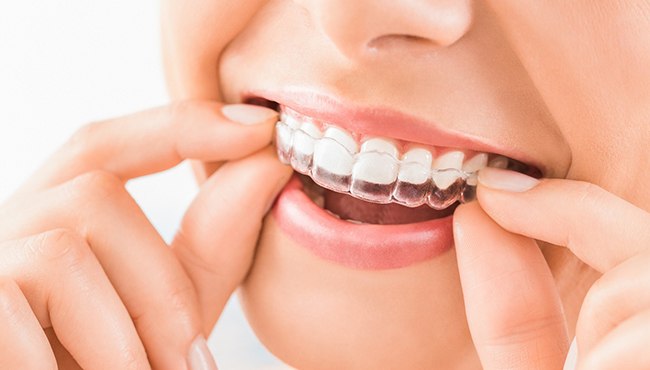
Invisalign aligners are widely known for their ability to deliver flawless results without clunky brackets and pesky metal wires. However, that’s not the only reason that millions and millions of patients have chosen to achieve their smile goals with Invisalign. In fact, their clear trays also:
Bypass Insecurities Surrounding “Metal Mouth”

Although there are several benefits that come with traditional braces, including their versatility, there are some considerable drawbacks as well, including how noticeable the brackets and wires are. That’s why so many patients love Invisalign: the aligners are completely see-through, so they are extremely hard to detect when worn. If an event comes up where you want to look and feel your best, you can always take them off too! Just make sure to put them back on as soon as you can.
Don’t Irritate the Soft Tissue in Your Mouth

In addition to their appearance, many patients with traditional braces aren’t happy with how uncomfortable the metal brackets and wires are. If that’s what has been holding you back from straightening your teeth, then you’ll be happy to know that Invisalign is metal-free, bracket-free, and wire-free! Plus, the aligners are custom-made from high-quality, low-profile plastic so the edges don’t irritate the soft tissue in your mouth.
Allow You to Stick With Your Oral Hygiene Routine

Another noteworthy perk is that you don’t have to adopt an entirely new oral hygiene regimen. Instead, you can take off your aligners, store them somewhere safe, and proceed as usual! The only adjustment you need to make is brushing and flossing your teeth after lunch (if you aren’t already, of course). If you often eat lunch at the office or grab a bite with friends on your break, then consider keeping an on-the-go dental care kit in your desk or car.
Have Quick Follow-Up Appointments

Periodically throughout your Invisalign treatment, you’ll need to come to our office so we can make sure your teeth are responding well to the aligners. We do this by taking new scans of your teeth, which usually only takes a few minutes. If everything looks good, we will answer any questions you have, schedule your next appointment, and send you on your way with your next batch of aligners!
Deliver Results in an Average of 12 Months

Typically, treatment timelines with traditional braces are between two and three years. Invisalign, on the other hand, delivers results in an average of just 12-18 months! There are even some cases where the clear aligners can straighten teeth in just six months. So, it’s definitely worth considering clear aligner treatment if you don’t want to wait longer than you have to for your dream smile.
Don’t Come With an Extensive List of Food Restrictions

Do you love crunchy foods like tortilla chips, popcorn, and whole apples? If so, you’ll be happy to hear that you don’t have to remove any of these foods from your diet with Invisalign! You can eat whatever you want during your teeth-straightening journey as long as you keep foods and drinks with added sugar to a minimum.
Living with Invisalign Aligners

Since Invisalign is one of the most popular orthodontic treatments today, you might already know quite a bit about it – from what the aligners look like to the issues they can correct. If you’re curious what living with clear aligners is actually like, however, then this next section is for you. Of course, if you have any questions about your teeth-straightening journey, you can always bring them to us as well!
Wearing Your Trays
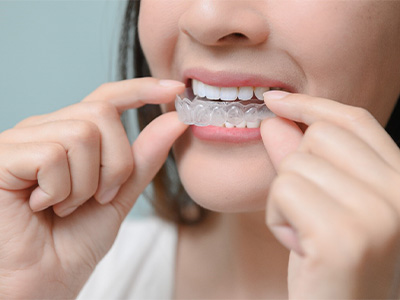
When it comes to wearing your aligners, there’s really only one rule: you have to meet the 20-22 hour-a-day wear time. In other words, you should only take them off to eat and complete your dental care regimen. If you get in the habit of not wearing them for hours at a time, then there’s a good chance that you will fall off-track with your treatment plan, resulting in unwanted delays.
Note: If you’re unsure if you’re wearing your aligners often enough, use the timer on the Invisalign app!
Cleaning Your Aligners
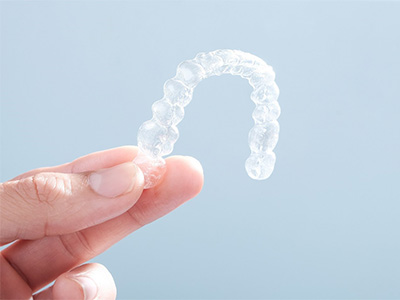
It’s common for patients to overcomplicate the process of cleaning their aligners. However, one of the biggest perks is that you don’t need special products, like interproximal toothbrushes and denture cleaners. Instead, get in the habit of using a soft-bristled toothbrush and clean, cool water to clean your aligners after each meal. If you need to wear your trays a bit longer than expected or you simply want to give them a deeper clean, you can also use the cleaning crystals that came in your welcome kit.
Eating & Drinking
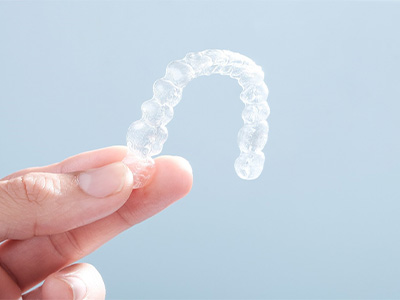
Although you won’t have to completely eliminate any foods from your diet, it is a good idea to exercise caution with raw nuts, popcorn, tortilla chips, and other crunchy foods to reduce the chances of an attachment coming loose. Outside of that, just make sure to take off your trays before eating or drinking anything other than water! That way, they don’t stain, break, or warp.
Losing or Damaging a Tray

Although it’s often easier said than done, do your best not to panic. If you’ve lost your trays, then carefully retrace your steps, paying close attention to the small crevices they could’ve fallen into. If you don’t have any success, that’s okay – call us ASAP so we can determine what the next best steps are. We also recommend contacting us if you have damaged a tray so we can determine if it needs to be replaced.
Routine Check-Ins
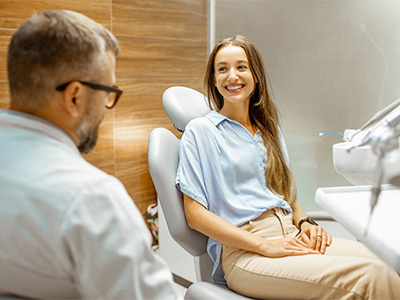
Every six to eight weeks, you’ll come into our office so we can monitor the movement of your teeth. We’ll do this by taking new scans, which will clearly show if they are tracking as anticipated. If they aren’t, then we’ll need to find a solution, like tweaking your original treatment plan slightly. If they are, then we will send you on your way with your next batch of aligners!
Understanding the Cost of Invisalign

Since no two smiles are exactly alike, there isn’t a set price for Invisalign in Fort Worth. Your treatment will depend on a variety of factors, such as the severity of your orthodontic issues and whether you wear your aligners often enough. During your initial consultation with Dr. Drennan, he will be able to give you a better idea of how much your treatment will cost. We will also review all your payment options and discuss which dental insurance we accept to help make achieving your new smile as affordable as possible.
Factors that Affect the Cost of Invisalign
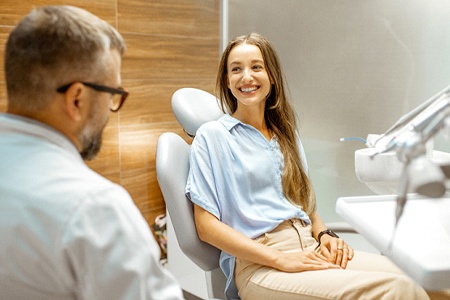
When calculating the cost of Invisalign in Fort Worth, many factors can affect the final price. Some of those include:
- Whether you’re straightening one arch or both. This often depends on the extent and type of dental misalignment you have.
- The number of aligners you need. Logically speaking, straightening both the upper and lower teeth will cost more than straightening just one or the other.
- Your treatment compliance. You may have to pay more than expected if you lose an aligner or fail to stick to your treatment plan.
- Whether you need additional accessories. Depending on your case, you may need elastics or other accessories to ensure successful treatment.
Invisalign vs. SmileDirectClub™: Which Costs More?
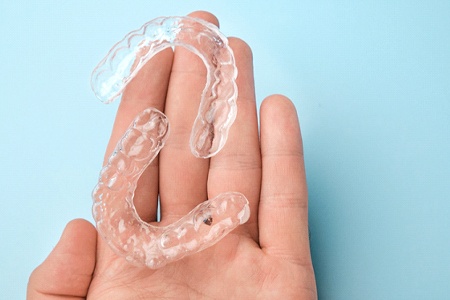
Patients on a budget may be tempted to opt for do-it-yourself clear aligner therapy like SmileDirectClub™ to cut back on expenses. It typically costs around $2,000, while Invisalign can run anywhere from $3,000 to $8,000. Even though the lower price point is certainly attractive, it’s important to remember that you get what you pay for.
DIY clear aligners like SmileDirectClub™ often come with little-to-no dental supervision. Because of that, plenty of things can go wrong, resulting in issues that will need to be addressed by a professional anyway. Meanwhile, you can enjoy the trusted oversight of our experienced team throughout your entire Invisalign journey. Plus, Invisalign clear aligners are made from a patented material designed for comfort and efficient tooth movements, which means you can enjoy a smoother, more successful treatment process!
Does Dental Insurance Cover Invisalign?
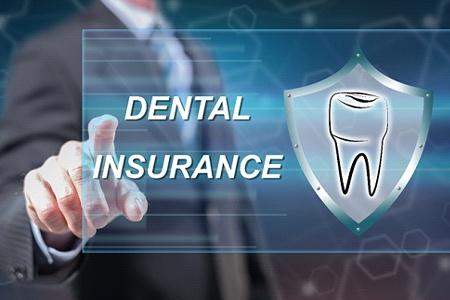
The good news is that most dental insurance plans offer coverage for orthodontic treatment, including Invisalign. If your policy applies, it can reduce your out-of-pocket expenses by $1,000 or more! Of course, every plan is unique which is why you should confirm the details of your coverage with your insurance provider before committing to anything. Our team is more than happy to help with this step if needed!
What’s holding you back from getting a straighter smile? Give us a call today and schedule your consultation to meet with your Invisalign dentist in Fort Worth!
Invisalign FAQs
DOES INVISALIGN HURT?
Generally speaking, Invisalign is not a painful treatment. Because of its smooth plastic design, it’s actually quite comfortable compared to other orthodontic options. While there is a brief adjustment period where slight soreness and discomfort are present, it will go away soon after you begin wearing the aligners. Over the course of your treatment, you’ll switch to a new set of aligners every couple of weeks. Each set is designed to push teeth into straighter positions, which is why you’re experiencing soreness. Taking painkillers can help mitigate mild soreness as well as using cold compresses or drinking ice cold water.
WHAT HAPPENS AFTER INVISALIGN?
After you’ve worn the last pair of aligners in your series, Dr. Drennan will need to confirm your teeth have moved to the new positions as intended. From there, he can break down what your future maintenance will look like. One of the most important post-treatment steps to take is wearing your retainer, which is designed to be more comfortable than other oral appliances you may have seen in the past. We may recommend either a wire retainer or a clear plastic option that looks similar to Invisalign’s clear aligners.
Retainers are crucial to keeping your teeth in their straightened positions. The last thing you want is for your teeth to move back after you’ve spent months dedicated to wearing Invisalign (not to mention money to pay for treatment). A retainer is essentially your ticket to enjoying a straighter smile in the long term. In most cases, you’ll wear the retainers full-time for 6 to 12 months, then only when you go to bed afterward.
WHO IS A CANDIDATE FOR INVISALIGN?
There are multiple factors to consider when choosing candidates for Invisalign. One of the biggest is age as patients that are under the age of 13 are not ideal candidates. The teeth and jaw are constantly changing at a young age, which means we won’t recommend treatment to anyone too young. Another factor is your ability to stay committed to wearing the aligners. If you don’t think you’ll be able to wear the aligners for the required 20 to 22 hours a day, you may prefer fixed braces instead. Additionally, if have a mild to moderate case of crooked, gapped, crowded, or misaligned teeth as well as minor bite problems, Invisalign is likely a reasonable option.
WHAT IF MY INVISALIGN BROKE?
In the event your Invisalign breaks, cracks, scratches, or gets damaged in some way, call our office. Hairline cracks don’t necessarily mean you can’t use them, but you’ll need to be extra cautious when removing and placing them back into your mouth. Never try to repair aligners on your own. When you contact Dr. Drennan and our team, we’ll determine if you need to have the aligners replaced outright as well as if you should revert to a previous pair in the meantime.
What Does Invisalign Look Like?
Invisalign aligners are custom-made for each patient and crafted from smooth, clear plastic. So, they resemble a see-through mold of your teeth! The key to keeping them stain-free is taking really good care of them, which includes rinsing them thoroughly with clean water each time you take them out and using a soft-bristled toothbrush to gently clean them before putting them back on.
Can You Eat with Invisalign?
One of the biggest benefits of Invisalign is that you don’t have to change your diet like you do with traditional braces. In other words, tortilla chips, whole apples, raw nuts, and other crunchy foods are all on the table as long as you take your trays off first!
Important note: Since foods that are high in sugar increase your chances of developing tooth decay if eaten in excess, we strongly recommend sticking to a well-balanced diet throughout your teeth-straightening journey. We also recommend being careful when eating crunchy, hard, and sticky foods since they can cause an attachment to come loose.
What Are Invisalign Attachments?
If you don’t know what Invisalign attachments are, they are basically small pieces of tooth-colored resin that are bonded to your teeth. Whether you only have a few or you have one on each tooth, they serve the same role: to give your aligners something to grip onto. Throughout your teeth-straightening journey, we may remove some or add new ones – it depends entirely on your treatment plan.
Does Invisalign Give You a Lisp?
One of the biggest concerns patients have prior to starting their Invisalign treatment is that they will develop a lisp because of their retainers. However, the majority of patients don’t report any changes to their speaking patterns. Plus, the small percentage that do can have peace of mind knowing that their tongue just needs some time to adjust, which usually only takes a few days. There’s also the added benefit that you can always take your aligners off if you have an important meeting, presentation, or speech.
Tip: If you feel like your speaking patterns seem slightly different, practice, practice, practice! Things like reading a book or magazine out loud will help your tongue adjust quickly.
How Long Does Invisalign Take?
You might have heard that the average treatment timeline with Invisalign is shorter than metal braces, but what does that mean exactly? In short, clear aligner treatment takes 12-18 months on average while traditional orthodontics takes 24 months or more. With all of that said, there are several factors that impact whether working through your series of trays will fall within that timeframe. So, if you want a more precise estimate, the best thing to do is schedule a consultation with our Fort Worth dental team.
Can You Drink Coffee with Invisalign?
You can, but you need to follow one rule: take your aligners off beforehand. In fact, you should take them out before drinking any dark-colored beverages, including soda, wine, and juice.






